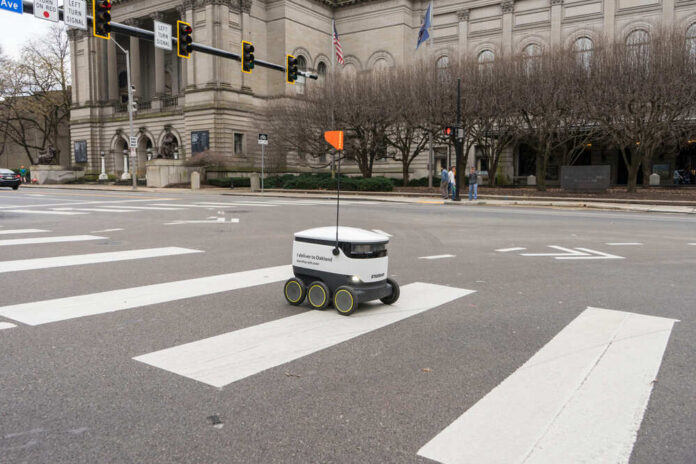
The Evolution of Food Delivery: Uber Eats Embraces a Robotic Revolution. In a groundbreaking move to reshape food delivery, Uber Eats has publicized its decision to broaden the deployment of its robotic food couriers across its platform. The innovative robots, creations of Serve Robotics, have proved to be a game-changing addition to a highly successful Los Angeles pilot program.
Serve Robotics and Uber Eats: Pioneering Technological Transformation. The robot food delivery program was first trialed in the West Hollywood neighborhood in May and has demonstrated remarkable success since. The four-wheeled delivery robots, operating daily from 10 a.m. to 9 p.m., have seen their demand in the city surge over 30 percent month-on-month. The program’s success has led over 200 Los Angeles restaurants to join the bandwagon and offer food delivery using these compact yet efficient robots.
Scaling Up the Robot Food Delivery Program. Following the triumphant pilot, Serve Robotics and Uber Eats are setting their sights on scaling the program across various US markets. The partnership serves as a significant milestone towards the widespread commercialization of autonomous delivery robots, showcasing the potential of innovative technology in disrupting traditional service delivery.
Ali Kashani, Serve Robotics CEO, expressed his excitement in a statement. He asserted, “We are thrilled to expand our collaboration with Uber Eats, taking this cutting-edge technology to more cities across the country.”
Unveiling the Technical Specifications of Serve Robotics’ Delivery Robots. The delivery robots, akin to a small shopping cart in size, boast a payload capacity large enough to accommodate two large shopping bags or four pizza boxes. They efficiently navigate city sidewalks, delivering up to 50 pounds of food or items, thanks to their four wheels, multiple cameras, sensors, and advanced artificial intelligence.
These robots’ eco-friendly design powered by electricity ensures seamless navigation and collision avoidance, courtesy of AI that detects the presence of people or vehicles in their path.
Enhancing User Experience with Interactive Delivery Choices. Customers placing orders on the Uber Eats app can now choose between a sidewalk delivery robot and a human courier for their delivery, with no change in delivery cost. These delivery robots zip along at a speed of up to seven miles per hour with a delivery range of approximately one mile. Customers can expect to receive their orders within 30 minutes, according to Kashani.
On reaching their destination, the robots send the customers a notification, along with a unique code to unlock the payload lid. This feature ensures that only the intended recipient can retrieve the order.
The Expansion Plans: California, Texas, and Beyond. The strategic partnership is gearing up to deploy approximately 2,000 delivery bots by early 2026, marking one of the most substantial robotic delivery fleet roll-outs in US history. “Our accelerated growth on Uber Eats is expected to persist,” Kashani added, suggesting an increasing deployment of robots as their coverage and delivery volume on Uber Eats escalates.
Presently, Serve Robotics manages a fleet of around 100 robots in Los Angeles. With its alliance with Uber Eats, it plans to launch its delivery services in other cities within California, Texas, and even Canada.
Broadening Horizons with Other Corporate Partnerships. In Los Angeles, Serve Robotics has already teamed up with 7-Eleven to facilitate deliveries. Furthermore, it is collaborating with other companies like Pizza Hut in Vancouver and Walmart in Arkansas to broaden the use of robots for deliveries.
Serve Robotics has also joined forces with autonomous car firm Motional to test food deliveries in Santa Monica using the company’s self-driving Hyundai Ioniq 5 battery-electric cars.
Exploring Other Robotic Delivery Options. Uber Eats is concurrently exploring various robotic delivery options in different locations. It has recently expanded its partnership with Cartken, an autonomous delivery robot company, to various parts of Virginia following a successful trial in Miami.
The future of food delivery is indeed robotic, and with companies like Uber Eats and Serve Robotics leading the way, the horizon looks excitingly automated and efficient.














